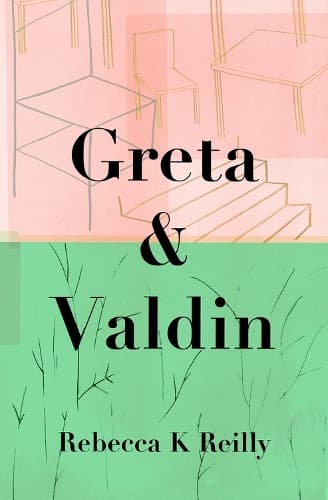Review: Greta & Valdin
Reviewed by Hannah Tunnicliffe
Reading Greta & Valdin by debut author Rebecca K Reilly reminded me of watching Seinfeld in the 1990s. Smart, weird, hilarious, single people navigating living and loving in the big city where, in the case of siblings Greta Vladisavljevic and her brother, Valdin Vladisavljevic, the big city is modern-day Auckland.
Much like a Shakespearean play, Reilly opens her novel with an explanatory list of characters – mostly Catalonian or Russian names plus nicknames, two pairs of whom share the same name just to add to the enjoyable mayhem. The list features 20 of the siblings’ closest family, friends and lovers, including one described as “Cosmo: is the closest they have to a cousin.” With a cast so big and interconnected, reading Greta & Valdin could seem daunting but Reilly does an expert job at character development, each of whom is wholly formed and distinguishable from the other, shared name or not.
Greta & Valdin opens with Valdin leading the narration, finding a card left by a courier indicating an undelivered package. We quickly learn that Valdin is gay, Russian and Māori, heartbroken and experiencing obsessive compulsive disorder: “Sometimes I think I can regain control by doing everything right, but the things I think I need to do don’t make any sense. It’s like being extremely superstitious but also hating yourself.”
Valdin might not have much affection for himself but the reader instantly does. He is a vulnerable oddball with a dry, cynical, self-deprecating sense of humour, impossible to dislike. When we meet Greta, who takes her turn narrating chapter two, it is clear that the siblings are clearly cut from the same cloth. Rather than reeling from heartbreak, Greta seems to be heading straight for it, deep in a crush on a fellow University tutor named Holly who is constantly asking her to mark assignments or take tutorials for her.
Auckland University and Auckland city are at the heart of this novel. Greta and their father, Linsh, both work at the University while Greta and Valdin live together in an inner city apartment near it. Tāmaki Makaurau has possibly never been so authentically celebrated with wry, humorous observations: “We walk until we get to the big crossing, the one where big Santa used to live on the Farmers building at Christmas. I miss how he used to wink and beckon. It felt like the city wasn’t so sexually repressed back then.” While the setting is local and sexually repressed, the Vladisavljevic family are the opposite; melodramatic, international, unconventional and full of secrets, the family form a cast straight out of a Wes Anderson film. As Linsh observes: “We’re all strange, romantic, emotional people in this family.”
Reilly fuses socio-political commentary with humour in her debut novel, making Greta & Valdin both smart and funny. The Vladisavljevic family can never remember “white people names,” Greta observing,“I know I can remember Sina, Min, Ashford and J-soek, but there’s no way I’m going to remember Kieran,” while her friend Elliot gets called “Greg” for a whole day. Racism, sexism and homophobia are all examined here in ways that make you think, sometimes cringe but mostly laugh, due to Reilly’s dry, acerbic tone which manages to also be warm and generous.
The characters might be slightly at odds with the world but Reilly loves them and the affection shows. It doesn’t take long to become invested in mum Beatrice’s secrets, Valdin’s longing for ex-boyfriend Xabi (who happens to be his Uncle’s husband’s brother), Greta’s misdirected affection for Holly, brother Casper’s past scandals, nephew Tang’s newly discovered monogamy or trying to figure out how almost-cousin Cosmo, currently unaccounted for, features in all of this. Greta & Valdin is fresh, funny, tangled and brilliant. I can’t wait for someone to make the sitcom so I can keep Reilly’s characters in my life.
Reviewed by Hannah Tunnicliffe
